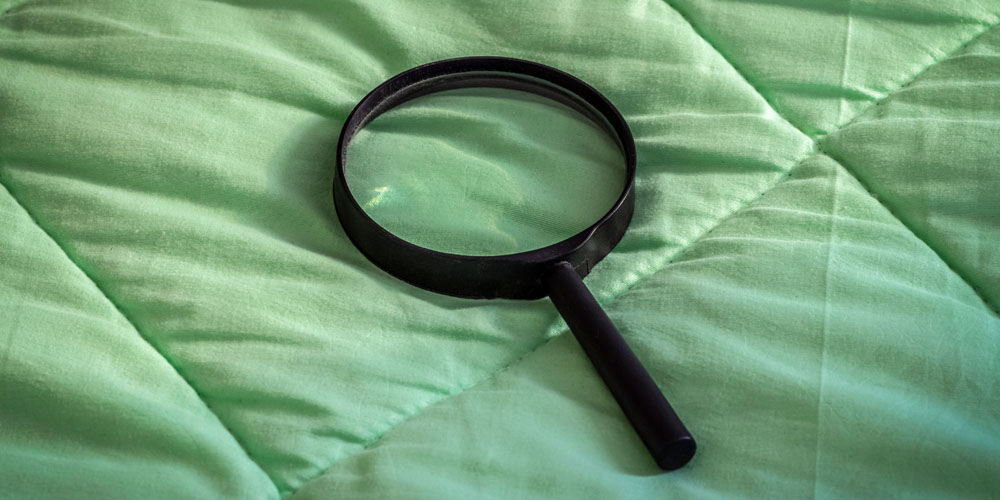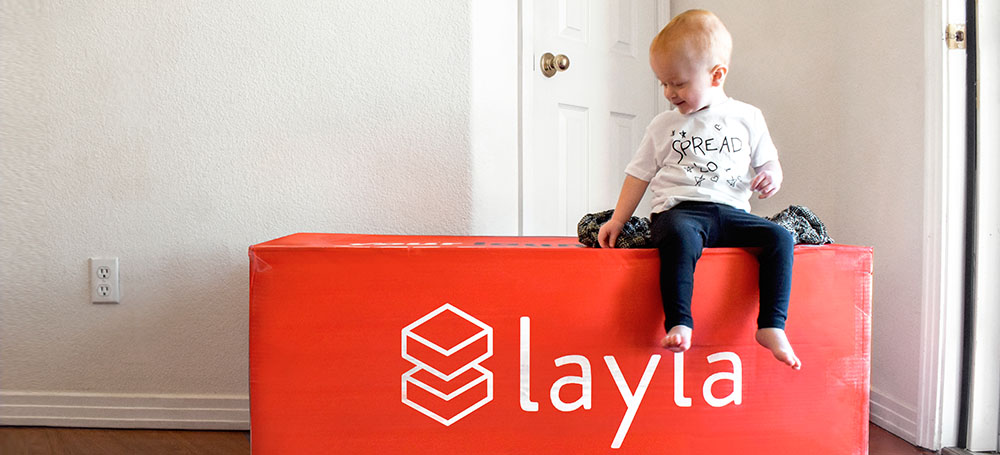Why you should check your mattress for bed bugs
Bed bugs are not something you want sleeping with you, but unfortunately, they are very common and have even had a resurgence in the last few years. In fact, one out of five Americans has had a bed bug issue in their house or knows someone who’s experienced a bed bug infestation at home or in a hotel. If you’re concerned that you have a bed bug issue, there are some easy ways to learn the signs of an infestation and methods to address the problem.
Common Signs of Bed Bugs
Bed bugs can get into your home from other infested areas or objects like used furniture, luggage, purses, backpacks, and anything with a soft surface. Once they get into a multi-unit structure, they may spread out and infest other apartments and homes.
One of the most common ways people learn they have an issue with bed bugs is because they get bitten by them while sleeping. Bed bugs are usually active during the night and feed on people’s blood. Their bites are found on skin that’s exposed during the night, as opposed to other pest bites like fleas, where bites are typically found near the ankle bone.
Bed bug bites appear in rows, which is associated with their feeding patterns. In most cases, these bites will be itchy, but occasionally, people won’t react at all to a bed bug bite. These bites are often mistaken for other nuisances and pests like mosquitoes.
Although bed bugs are hard to see during the day, there are some telltale signs that you have them.
- Excrement stains: When bed bugs finish eating, they’ll void their last meal, and it’ll appear as a black spot on your bedding.
- Exoskeleton shedding: As bed bugs move through their life stages, they’ll molt and leave their old exoskeleton behind. If you find any in your bedding, the infestation has already happened.
- Bloodstains: If you accidentally crush a bed bug in your sleep, you’ll likely find a bloodstain from the dead bed bug.
Where Do Bed Bugs Hide
As you might imagine, bed bugs are pretty sneaky – that’s why it’s relatively easy for an infestation to happen unnoticed for a while. With that said, it’s best to search for early clues rather than wait for a widespread infestation to occur. Minor outbreaks of bed bugs are much easier and less expensive to treat.
When bed bugs aren’t actively feeding, they hide in the dark. In a bedroom, they might hide in the seams and tags of a mattress or box spring. They can fit anywhere as small as the width of a credit card. If you have a big bed bug problem, you’ll find bed bugs in outlets, under loose wallpaper, in drawer joints, in luggage, under furniture, and even in the seams of chairs and the folds of curtains. In the next section, we’ll lay out how to closely check both your bed and the rest of your home for bed bugs.
Checking for Bed Bugs on Mattresses and in Your Home
To investigate whether or not you have a bed bug problem, it’s important to look for the signs of bed bugs yourself. Here are the steps you can follow to safely search out bed bugs in your home:
Step 1: Look for Evidence of Bed Bugs on Your Mattress
- Don a pair of vinyl or latex gloves to protect your hands from being bitten by a live bed bug or touching a dead one. In a pinch, you can just wrap a plastic bag around your hands instead.
- Identify if any bed bugs are around your bedding. Adult bed bugs are typically flat, a quarter-inch long, and have 6 legs. Bed bugs that have eaten recently will be bright red and round, while bed bugs that haven’t eaten recently will be darker brown and flatter.
- Look for stains. If a bed bug gets crushed, it will leave behind a small red stain.
- Check for eggs, discarded exoskeletons, and excrement. Bed bug excrement appears as small black dots. You may also find very small pale white eggs and the discarded exoskeletons of bed bugs who’ve moved on to the next life stage.
Step 2: Check Common Bed Bug Hiding Areas
- Strip the sheets off your bed and check the linens. Remove the bedspread, comforter, and duvet. Then, slowly pull off the sheets and mattress protector. If you have a mattress protector that guards against bed bugs, check the seams and tags of the protector.
- Pull the bed away from the wall. If your bed is against a wall, pull it away from any obstructions so you can better investigate your memory foam mattress. Flip the mattress over and check the bed frame and joints. Don’t forget to check the wall for bed bugs, as well.
- Check other furniture. Bed bugs want to be where the people are and are drawn to warmth – so don’t ignore pieces of furniture where you tend to spend lots of time. Recliners, chairs, and couches all need to be thoroughly searched for bed bugs.
- Inspect the perimeters of rooms. Check the spaces between the baseboard and floor. If there are any gaps, bed bugs can make a cozy hiding spot there. Run an old credit card into such gaps to push them out.
- Look through your curtains. Bed bugs can easily hide in the folds of your curtains, so make sure you carefully examine them. They’re more likely to hide at the bottom section of your curtains where they can easily crawl but may also climb to the top.
Step 3: Inspect Less Frequented Places
- Check underneath less-used furniture. This includes furniture pieces and bigger electronics like stereos, TVs, bedside tables, desks, and drawers. The best method for looking under furniture and into crevices is by using a bright flashlight.
- Inspect outlets and other electrical items. Remove electrical items so you can look behind them. Bed bugs can use electrical outlets as a way to travel to other rooms, so make sure you inspect your entire house if you find bed bugs in an outlet.
- Look under lamps, clocks, and other home accessories. Don’t forget to check pet beds and underneath rugs as well.
To eliminate the bed bugs you find, there are many insecticides available that effectively kill bed bugs. For linens, wash, and then use the highest dryer setting you can to immediately kill all the bed bugs and shake them out in an outside area when they’re dry.
If you don’t feel comfortable taking on an army of bed bugs, you can also call up pest professionals who specialize in bed bugs with EPA-approved insecticides and steam-cleaning methods.
Bed Bug Behavior
Understanding a little bit about how bed bugs go about their lives can help you catch a bed bug infestation earlier.
Bed Bug Feeding Habits:
- Prefer to feed on humans but will feed on other mammals as well as birds
- Will move up to 5-20 feet from hiding place to feed
- Normally will feed at night but can also feed during the day
- Feeding takes a few minutes to just over ten minutes
Bed Bug Life Cycle:
- Bed bugs need to feed before they can develop into the next life stage; each stage requires molting
- To continue to make eggs and reproduce, bed bugs need to eat at least once every two weeks
- Every female can lay between 1 to 3 eggs every day and 200-500 eggs over her lifetime
- The egg-to-egg life cycle may take four to five weeks
Bed Bug Living Conditions:
- Bed bugs can survive at temperatures as low as 46 degrees Fahrenheit but will die in temperatures at or above 113 degrees Fahrenheit
- Bed bugs are found anywhere and everywhere humans live
- Tropical bed bugs are a bed bug variant that needs a higher average temperature to thrive and live in subtropical and tropical regions
How Do I Protect Myself from Bed Bugs?
All that information about bed bugs is enough to make anyone feel itchy. But don’t worry, there are some steps you can take to prevent bed bugs from appearing in the first place.
No matter what type of mattress you have whether it is a memory foam or copper infused mattress, you can protect it from bed bugs by following these steps.
How do you protect your mattress besides adding a protective cover to your mattress? The EPA also lays out some basic guidelines to help prevent bed bugs.
- Thoroughly inspect secondhand furniture, beds, and couches for signs of bed bugs before bringing them into your home.
- Use a full encasement mattress protector.
- Reduce the clutter in your home to eliminate potential bed bug hiding spots.
- Vacuum often to remove bed bugs from your carpet and other floor coverings or baseboards.
- Be extra careful when using shared laundry facilities.
- Invest in a portable heating chamber to treat items possibly affected by bed bugs.
Sure, nobody wants to think about bed bugs – but if you’re prepared with the right information, you can quickly identify the signs and fix them. With these tips for how to check your mattress for bed bugs, you’ll be back to sleeping worry-free in no time at all.



